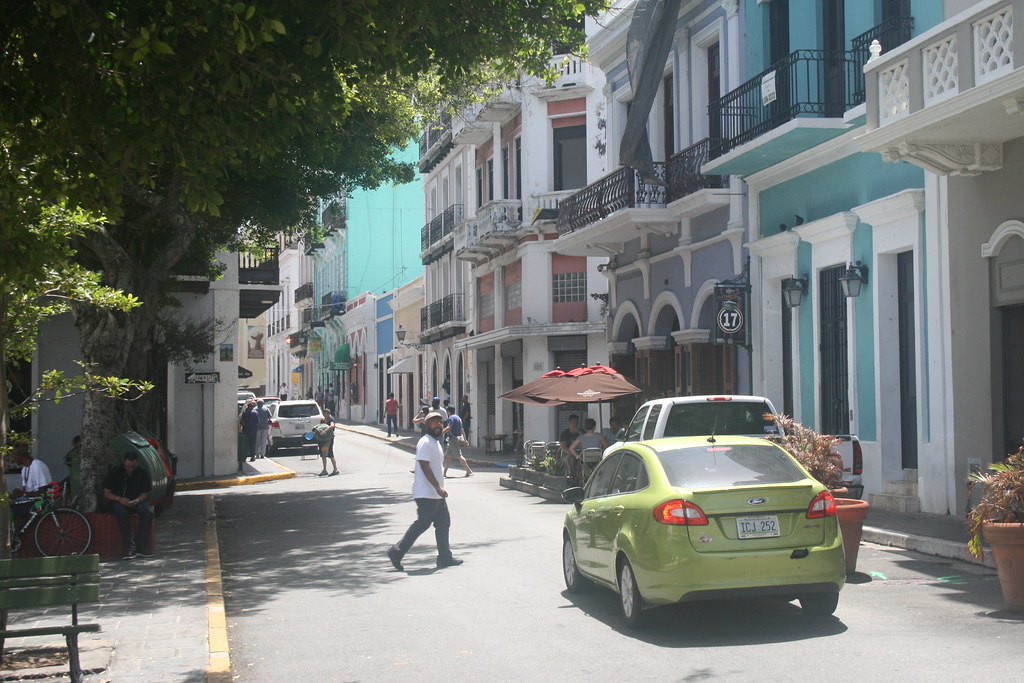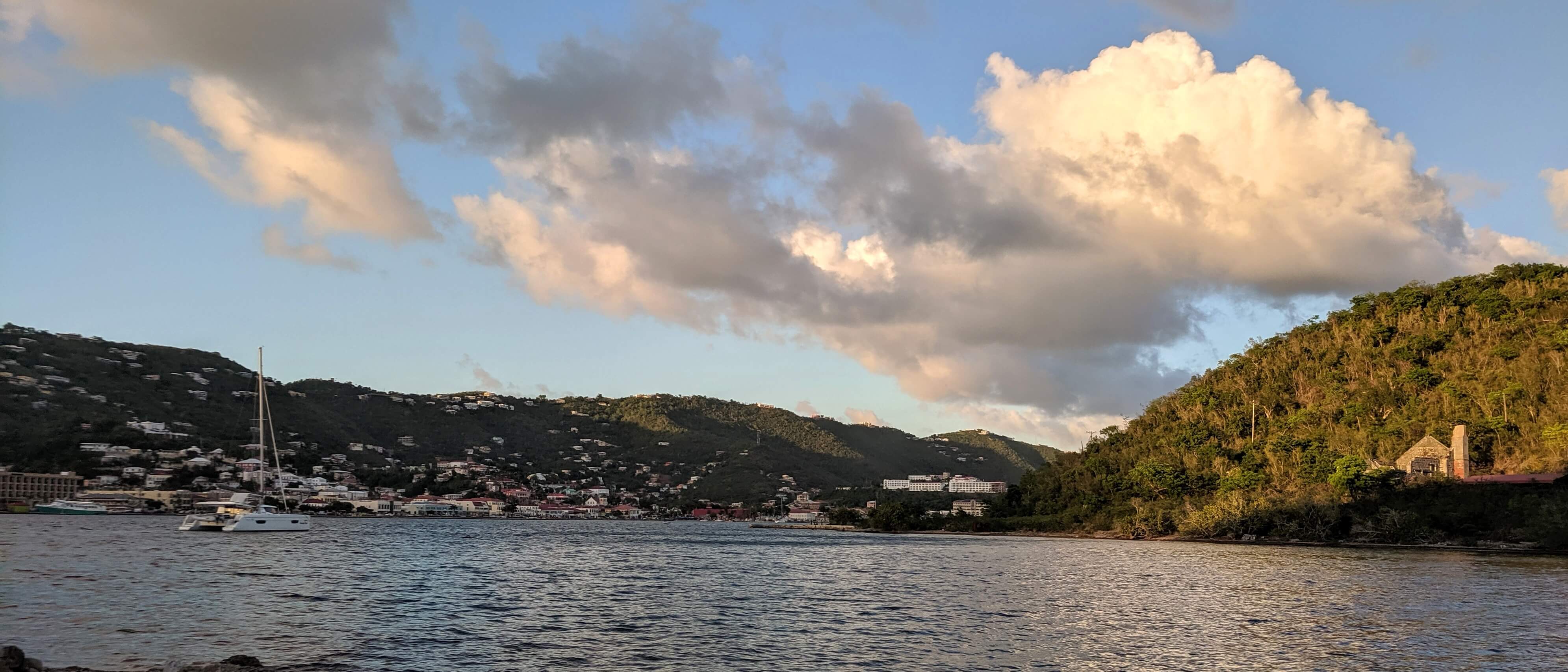Recovery update for Puerto Rico and the U.S. Virgin Islands
Six months after Hurricanes Irma and Maria, we are taking a look at the status of the recovery on these two CSG/ERC member territories
Morning Ag Clips on February 21, 2018, carried the article “USDA Supports Disaster Recovery in Puerto Rico.” The piece began with a quote from U.S. Secretary of Agriculture Sonny Perdue: “The people of Puerto Rico still face immense challenges, as the island recovers from multiple hurricanes.” Referring to a federal grant to assist Puerto Ricans, Perdue continued by saying that “This grant fulfills the administration’s pledge to support the recovery and our commitment to ensuring that residents of Puerto Rico get the vital nutrition assistance they need to move forward.”
The assistance, which began March 1, is being distributed through Puerto Rico Nutrition Assistance Program (NAP). NAP is administered through the USDA and operated by Puerto Rico Department of Family Affairs. The grant is made by a supplemental appropriation from Congress and delivers an additional $1.27 billion for hurricane relief. NAP in Puerto Rico is different than SNAP in the rest of the United States since it is delivered to the territory as a block grant for its government to distribute in a manner it determines to be the best nutritional use of the money. Governor Ricardo Rosselló said, “Our thanks to the U.S. Congress and Secretary Perdue for providing this grant that helps the American citizens who are residents of Puerto Rico.”
This article prompted us to examine the recovery in both Puerto Rico and the U.S. Virgin Islands, whose governments are periodically updating the status of recovery for their jurisdictions. The media in the United States are covering the situation as well, although there is more news available from Puerto Rico than for the Virgin Islands.

IMG_6325" by MDelli is licensed under CC BY-NC 2.0
Annabel Guillén, federal affairs advisor and liaison to the Equality Commission for the Senate of Puerto Rico, and the current president of the CSG/ERC’s Eastern Leadership Academy (ELA) Class of 2017, provided current articles and insight into what is happening on the ground on the island.
Hurricane Maria destroyed two-thirds of the island’s electric infrastructure, and put 3.4 million people in the dark. Now, six long months later, much of that electrical infrastructure has been rebuilt. As of the February 23 Government Status Report, 86 percent of the island had power. That percentage has now been updated by Ms. Guillén to 90.7 percent. In a March 7, 2018, editorial, the Roanoke Times reported that 158,000 people and businesses remained without electricity. While 90 percent is a real accomplishment, if you are one of the 158,000 without power, it is a huge, ongoing disaster. There continue to be 3,700 field workers attempting to restore power. Of the 78 municipalities, 35 percent have 95 percent or more of the power restored, and another six towns have 100 percent restored. Water infrastructure is also recovering rather well. Approximately 96 percent of the towns have water restored, leaving approximately 50,000 people still without running water.
No one knows for sure how many residents are still without homes. Media reports acknowledge that 10,000 people are living in temporary housing, mostly provided by FEMA. The government of Puerto Rico reports that five shelters are still open with a total of 65 residents; what is not known is how many residents are living with family or friends. FEMA has provided $113 million in rental assistance to 129,000 people. That assistance, by law, is to set to expire on March 20. Governor Rosselló has asked FEMA to extend that deadline to May 14.
Some other recovery statistics are:
- Telecommunications (landlines) is 98.5 percent restored
- Cell service is at 93 percent of pre-storm coverage
- 88 percent of gas stations are open and operating
- 92 percent of supermarkets are functioning
- All hospitals are operational
- 89 percent of banks are open
- As hard as the agriculture sector was hit, 97 percent of milk is being processed and delivered to stores
The tourism industry shows the weakest statistics, with only 81 peracent of hotels operating. HUD has provided $1.5 billion for housing to Puerto Rico and $243 million to the USVI. The USDA, in addition to the NAP grant, has given $81 billion to all hurricane and wildfire impacted states: $36 billion of that to Puerto Rico, $3.8 billion of which is earmarked for agriculture.
While these statistics appear promising, the long-term forecast is sobering. The Atlantic reports that the devastation and slow recovery has created tens of thousands of job losses and resultant foreclosures. Reuters reports a decreased police presence and increased crime. Six months later, life in Puerto Rico is better than immediately after the hurricanes but may never be normal again. “Electricity just vanishes at times, often for hours,” says Annabel Guillén. “Puerto Ricans are trudging slowly away from survival and into difficult realities of long-term recovery.”
USA Today reports that tourism, which, in 2016, according to the World Travel and Tourism Council Report, accounted for 8 percent of the territory’s GDP, has been affected significantly by the hurricanes. Many workers have left the island and tourists are staying away. The Puerto Rico General Fund Revenue is in decline. The territory was in dire financial condition before this human disaster, and as a result of Maria, territory expenditures are of necessity up and revenue down. The General Fund received $348 million less during the first half of the current fiscal year, or a decrease over the previous half year of 8.8 percent. The decrease is a result of losses in income tax, sales tax, and taxes on foreign corporations. Ms. Guillén reports that 9,000 agriculture employees have lost their jobs as a result of the annihilation of the agriculture sector in Puerto Rico. Ms. Guillén tells us that tourist booking of hotel rooms was down during the winter high season by 30 percent, putting many people out of work.
Many residents of Puerto Rico have left the island. Emigration from the island, already relatively high, has been exacerbated following Hurricane Maria. Hunter College’s Center for Puerto Rican Studies revised its estimate of Puerto Ricans who have left to 136,000, down from 300,000. One factor cited was that FEMA gave 40,000 residents U.S. mainland addresses even though they still lived on the island. Former San Juan Mayor Hernán Padilla cites population loss as a major challenge to economic recovery. The Congressional Task Force on Economic Growth in Puerto Rico suggests that just some of the effects of lost population mean fewer taxpayers, fewer workers, fewer business investors, and fewer consumers. The Center for Puerto Rican Studies warns that Puerto Rico may lose up to 470,000 residents in total, or 14 percent of its population.

St. Thomas, U.S. Virgin Islands
Let us now focus on the U.S. Virgin Islands’ attempt to recover from two category 5 hurricanes. On March 12, 2018, the government of the U.S. Virgin Islands reported that
- 100 percent of all eligible residents have electricity restored on all three main islands
- 90 percent of electricity was restored at 100 days
- Cruise ships are back, a boom to this territory’s economy
- Only 40 percent of hotel rooms are available; since tourism is the largest industry in the territory, a 60 percent reduction in rooms translates to far fewer tourists coming and staying overnight and longer, with fewer local residents employed
- Air service is increasing, but until hotels are available, there will be no passengers flying into the island
- The government of the Virgin Islands is reporting that all beaches meet water quality standards
- Car rentals are at 100 percent of pre-hurricane availability
- All roads are open
- Employment and residential housing are still major hurdles to recovery
The U.S. Virgin Islands have made significant infrastructure recovery from two category 5 hurricanes, but much needs yet to be done. Concern for long-term financial viability still persists. Debt is high, pensions are underfunded, unemployment is high and has gotten worse because of the storms, and many have left for the mainland United States to find employment.
In conclusion, we believe the people of Puerto Rico and the U.S. Virgin Islands will weather this storm and come out stronger, but it will be a challenge. We will keep you informed as things are updated for our two ERC territories.




